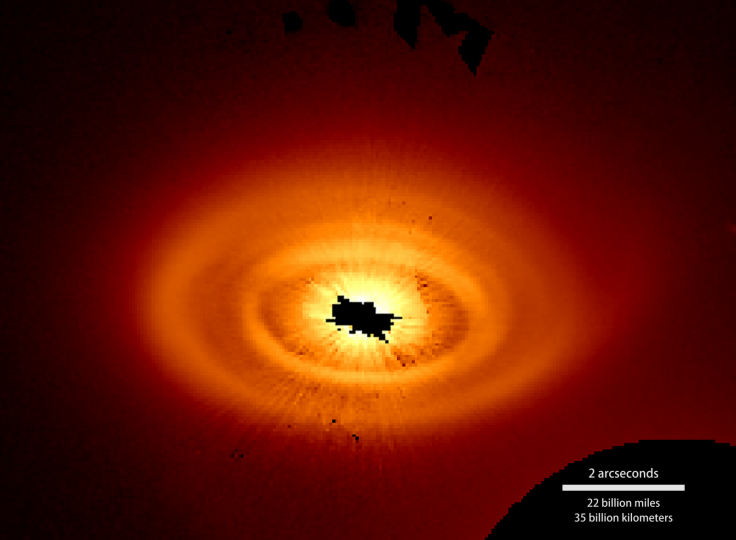NASA has identified that discs of dust and gas in debris around young stars form patterns when exposed to ultraviolet light. Scientists have observed patterns like rings, arcs, and spirals which might be formed when UV light hits the dust grains stripping away its electrons.
Researchers at the American Astronomical Society meeting in Washington said on January 11 that the electrons collide with nearby gas and heats the gas. Increased warmth of the gas results in higher pressure which traps more dust, in turn heating up more gas. This leads to a cyclic phenomenon named as photoelectric instability (PeI) which works along with other forces to create features which were previously believed to be planets in debris disks.
Alexander Richert, a doctoral student at Penn State in University Park, Pennsylvania who led the research said, "People very often model these systems with planets, but if you want to know what a disk with a planet looks like, you first have to know what a disc looks like without a planet."
Researchers have developed computer simulation designs for a better understanding of the effects. The simulations were generated and run on Discover supercomputer cluster at the NASA Center for Climate Simulation at Goddard. Wladimir Lyra, a professor of astronomy at California State University, Northridge and Marc Kuchner, an astrophysicist at NASA's Goddard Space Flight Center in Greenbelt, Maryland, had earlier suggested that PeI could explain the narrow rings seen in some disks in 2013. The model was, however, directly observed in 2016 during Alexander Richert's study. It was found that some discs would have arcs or incomplete rings similar to earlier predictions.
Richert has made the new study based on an earlier simulations study done by Lyra and Kuchner after including radiation pressure, the force caused by starlight striking dust grains.

According to the theory, light exerts a minute physical force on everything it encounters. This radiation pressure results in comet tails pointing away from the Sun and also helps in the solar sails which use pressure exerted by the sunlight on large mirrors in spacecraft helping in its locomotion. This force also results in highly eccentric orbits of dust particles and even flies smaller grains out of the disk.
The simulated research model explains the interaction of radiation pressure and PeI to affect the movement of dust and gas. It was found that the two forces determine different patterns depending on the physical properties of the dust and gas.
The research findings explain the rings and arcs found around HD 141569A star located at 320 light-years away in the constellation Libra. The new model also creates greater awareness among researchers not to jump to conclusions after a discovery but to look for further explanations as planets can create similar dust patterns around them.
Lyra said, "Carl Sagan used to say extraordinary claims require extraordinary evidence. I feel we are sometimes too quick to jump to the idea that the structures we see are caused by planets. That is what I consider an extraordinary claim. We need to rule out everything else before we claim that."
Kuchner's team would continue their studies to establish the roles of other parameters like turbulence and difference in the dust and gas types in the process. They also intend to add these factors to their simulation model.
A NASA-funded citizen science project named as Disk Detective aims to discover more stars with debris disks. The research led by Kuchner has already identified more than 2.5 million classifications of potential disks. This has helped in many new groundbreaking results.









